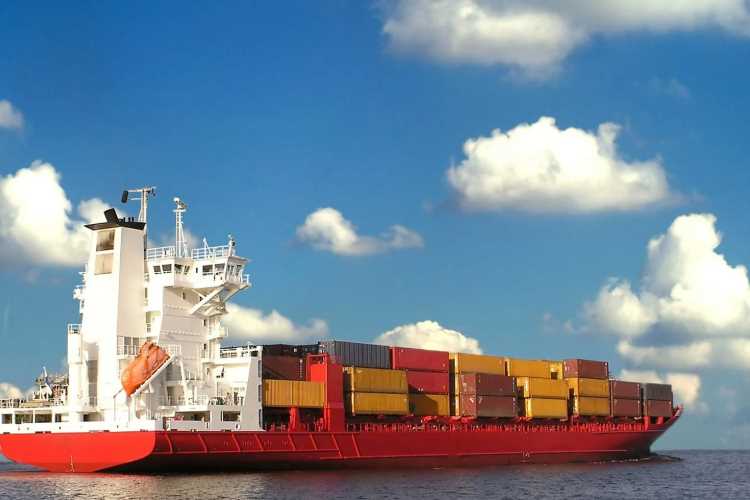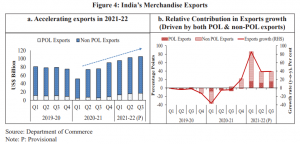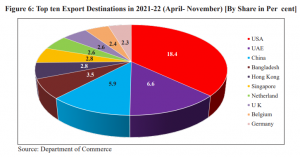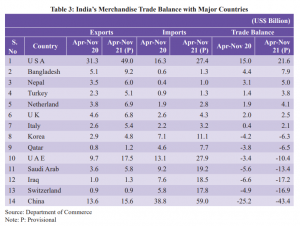
The vision of Atmanirbhar Bharat or self-reliant India seeks to accelerate the revival of the economy by boosting domestic demand and strengthening supply chains. With the onset of the Covid-19 pandemic, global trade took a big hit and this widened the deficits. Nevertheless, India is showing signs of a steady recovery and has readied plans for employment generation and export promotion.
India has set up an export target of $500 billion for financial year 2022-23. In December 2021, the country’s exports stood at $37.8 billion. In this context, there has been a lot of curiosity around the Union Budget 2022-23 announcements for the Indian economy. As an emerging market economy, the focus of the country is not just export promotion, but also generation of employment opportunities for its young population.
READ I Timely action on inflation needed to avert hard landing, says Maurice Obstfeld
Exports key to GDP growth, job creation
The role of exports is central to India’s efforts to become a $5 trillion economy by 2025. Towards this end, more focused strategies and policy mechanisms are vital. The government has taken steps to boost the exports ecosystem via trade policies and schemes such as TIES, RODTEP, PIL, and ODOP. Identifying the export potential at grassroots levels and building institutional frameworks will require the identification of areas of intervention.

The NITI Aayog developed the first-ever Export Preparedness Index (EPI) in 2020. The introduction of EPI is a significant step towards making India self-reliant as it ranks the states and UTs on critical parameters required for promoting exports through the four pillars — policy, business ecosystem, export ecosystem, and export performance. The ministry of commerce and industry has launched Logistics Ease Across Different States (LEADS) 2021 to analyse the business environment in states/UTs related to infrastructure, policy, and regulatory regimes to improve logistics efficiency in India.
READ I Universal pension can transform Indian economy
States and export promotion
Around 70% of India’s exports come from Maharashtra, Gujarat, Tamil Nadu, and Telangana. In the EPI ranks, Gujarat ranked first with a strong performance. Gujarat has also been ranked first in LEADS 2021, followed by Haryana, Punjab, Tamil Nadu, and Maharashtra. The performance of states and UTs in these indices can further help the institution identify the areas of intervention to enhance the export ecosystem.
In her Budget speech, finance minister Nirmala Sitharaman mentioned that the government will replace the Special Economic Zones (SEZ) Act with a new legislation that will enable states to become partners in the ‘development of enterprise and service hubs’. It may help utilise available infrastructure and enhance the competitiveness of exports for all existing and new industries.
The boosting the local manufacturing and setting up of export hubs need a strong engagement between the Centre and states. A coordinated effort by various bodies will ensure better strategies and policies for export promotion. The format of ‘competitive, cooperative federalism’ has sparked endeavours across states to act in developing a conducive environment for stakeholders across the value chain in realising their full potential.


The states are now engaging in export promotion activities and undertaking focused analysis for the identification of areas of intervention based on the state’s core growth drivers. Active participation of state and district authorities in the decision-making process can ensure the development of a time-bound plan as locals are more aware of the grassroots bottlenecks.
If India is to become a $5 trillion economy by 2025, the competitiveness of the existing service environment must undergo a fundamental change. This change has been incorporated in the Baba Kalyani panel report, which recommended that SEZs should be transformed into employment and economic enclaves. Changes to regulatory procedures as well as operational standards for SEZ units are envisaged, as well as a shift in focus from exports to employment.
India’s ongoing engagements for Free Trade Agreements (FTAs) with the UK, UAE, Mauritius, Australia, and the European Union have opened an opportunity to promote local products. This will complement the investments and export promotion schemes. The states that are lagging need to be pushed to craft export strategies and identify potential sectors.
Ground level interventions based on the performance of states and UTs in the EPI and LEADS indices can ensure a strong supply chain and competitive edge in the global market. It is an appropriate time for states to promote local and homegrown products during the FTA negotiations and get integrated to global platforms. Also, there is a need to streamline FTA negotiations with the various initiatives of the government for export promotion.
(Suvayan Neogi is a mineral economist with the Federation of Indian Mineral Industries. Sindhu Bharathi is a senior research analyst with Infinite Sum Modelling. Javeria Maryam is Associate, Public Policy and Research at Shangri-la Corporate Services, Mumbai.)
